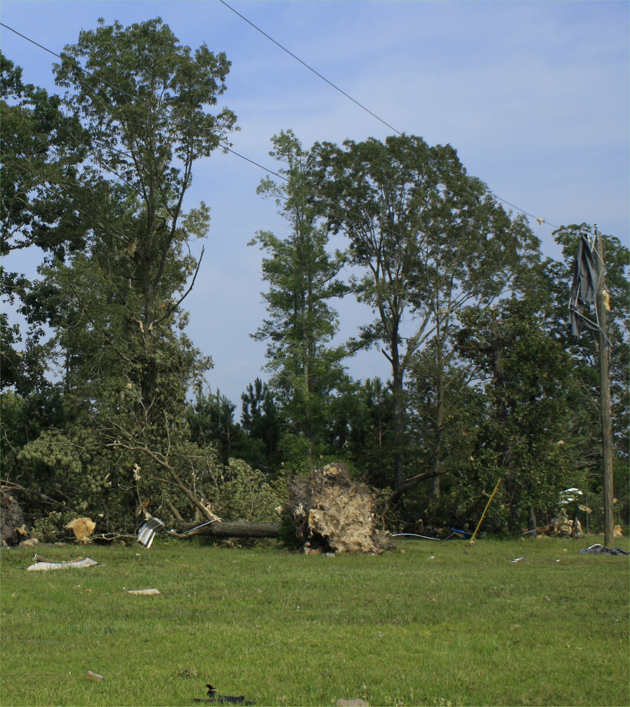Publisher's note: My apologies for the lateness of this post, but that is the very nature of large, damaging storms: They redistribute the allocation of duties to a different level of efficiency. Regardless, BCN is constructed to not only be a source of timely news and information, but an outstanding archival tool, with the near perfect cyber environment to keep history safe, relative, and, most importantly, recorded, documented.
Beaufort County suffers a derecho hit.
Inarguably, it was a devastating storm. And yes, I should have posted this before now; however, life has been somewhat hectic since the derecho cost me one full day of productivity. Extended loss of power is a significant downside in my line of work.
Powerless without power, I struggled forth, in the morning of the day after, to at least get a few pictures of the aftermath of this fast-moving destructive blast of energy that was built by a wind divergence in the upper levels of the troposphere (a ripple in the jet-stream) mixing with an abundance of warm to hot rising thermal currents. Derechos generally occur in the Northern Hemisphere during the hottest part of the summer - the months of June and July. It was Sunday afternoon at 4:40 pm, July 1st in this 2012, and it had been rather hot here in Beaufort County, North Carolina, and the skies grew inordinately dark, and the winds began to howl.
This sudden and terrible storm that fooled all forecasters as it barreled across North Carolina, growing bigger and more extreme until it climaxed in a crescendo of blustery wind and hail, and sideways rain just about at the time it hit Pitt County, was a killer storm that claimed 2 lives in its wake here in Beaufort County, another 12 elsewhere.
As a point of relative absurdity: I am whining about losing a day of productivity and sleeping without air-condition. On a more somber, and relative note, the family of David and Carol Harris, who both perished when a tree hit their golf cart in the Gilead Shores area, were dealing with the loss of their dear loved ones. These two untimely deaths, notwithstanding, were examples of sad and untidy business to mourn, to rectify, or just clean up after this monster storm that pummeled the eastern North Carolina region, and here in Beaufort County especially.
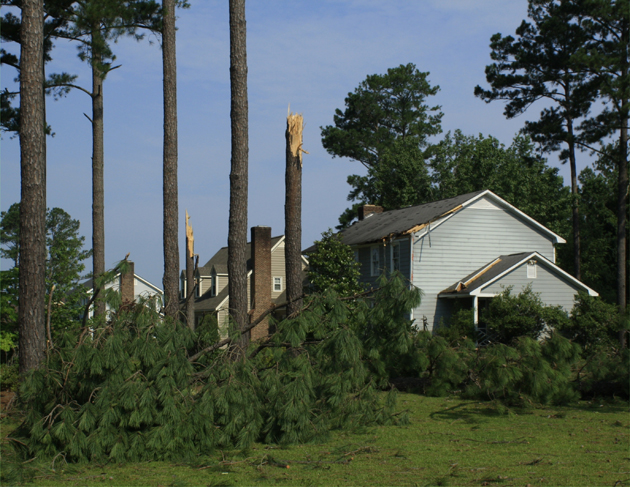 They say it was not a series of tornadoes, but gustnadoes that did this damage with such selective accuracy, here on Northwood Road in the subdivision of Smallwood, in northern Washington, NC: Above and below. photos by Stan Deatherage
They say it was not a series of tornadoes, but gustnadoes that did this damage with such selective accuracy, here on Northwood Road in the subdivision of Smallwood, in northern Washington, NC: Above and below. photos by Stan Deatherage
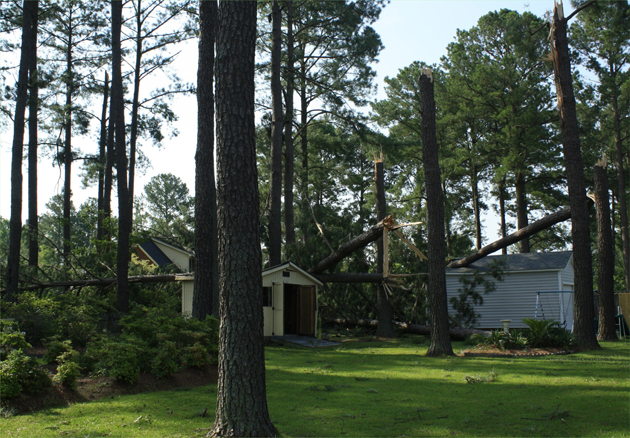
Where I live in Mac'swood, just about one mile from the center of Smallwood, the subject of the aforementioned images above, our winds were sudden, significant, and extreme. I can only imagine from the damage observed in the aftermath, just how terrible that abrupt force was as this storm enveloped the Northwood Road area of Smallwood.
Tall sturdy pine trees fell, like pick-up sticks, after being twisted at the stem, and snapped like twigs by the roaring wind of this "gustnado" that swept across north of Washington, and reports are, from all over Beaufort County, of them reaching down from the leading edge of this extremely dangerous Shelf Cloud. From what I have now read about this weather anomaly of this Derecho, gustnadoes, and straight-line winds are an infamous feature of the storm's unruly power.
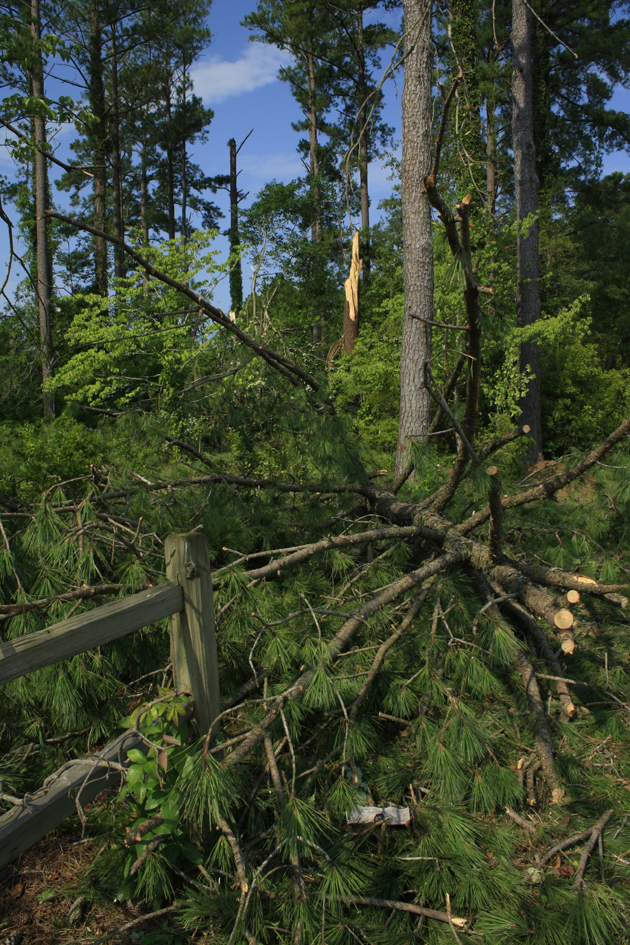 The damage was in great abundance, here in Smallwood along Northwood Road, with once towering pine trees twisted from their stems and thrown in many inopportune places: Above and below. photos by Stan Deatherage
The damage was in great abundance, here in Smallwood along Northwood Road, with once towering pine trees twisted from their stems and thrown in many inopportune places: Above and below. photos by Stan Deatherage
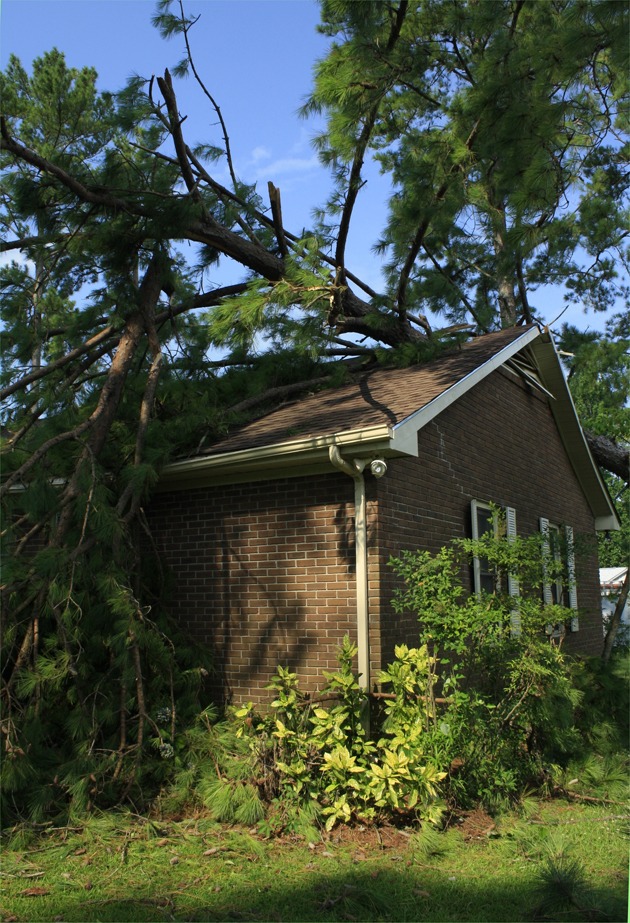
Immediately after the storm over half of the power customers in the Beaufort County area were without service, with many folks having their power restored in a few hours, and some people, like myself in Mac'swood, having our power restored within 24 hours. In the eastern end of the county, a large swath of Tideland EMC customers were without power due to a significant transmission line being down, and their power was restored later in the week. My one day inconvenience, with a near week of catch-up was but a minor inconvenience compared to my fellow Beaufort County citizens living farther east of the Washington, NC area.
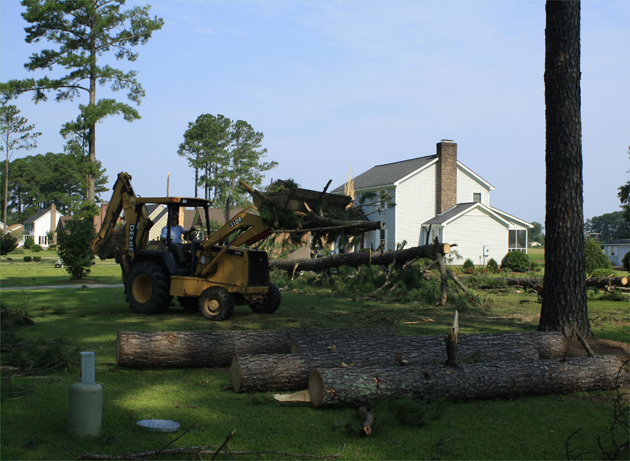 Smallwood homeowner, and gentleman farmer, Elwood Cherry made quick work in cleaning up his yard with his multi-functional tractor. Notice the standard lengths of the pine logs, and these logs had a diameter of well over 14" on the little end. Of course I asked: Elwood, are you going to plane these logs? The answer, "You bet: Above and below. photos by Stan Deatherage
Smallwood homeowner, and gentleman farmer, Elwood Cherry made quick work in cleaning up his yard with his multi-functional tractor. Notice the standard lengths of the pine logs, and these logs had a diameter of well over 14" on the little end. Of course I asked: Elwood, are you going to plane these logs? The answer, "You bet: Above and below. photos by Stan Deatherage

From my conversation with Elwood Cherry, with a residence on Northwood Road, he informed me that not only his residence suffered the wrath of this rare derecho, but his family's homestead and farm in northwestern Beaufort County in the Tranters Creek watershed took a few glancing blows from the severe winds and gustnadoes erupting from the advancing derecho, including three aged oaks, over 150 years old each near his "club house" down on the creek. Elwood said he would plane these oak logs as well as the pines in his front yard on Northwood Road.
The gustnado that tore into the Northwood Road area first devastated the airport at Warren Field as the movement of the storm's squall line moved from west to east. The pictures below, show the destruction on the airport premises was intense, and thus the story is perfectly told in the images here below.
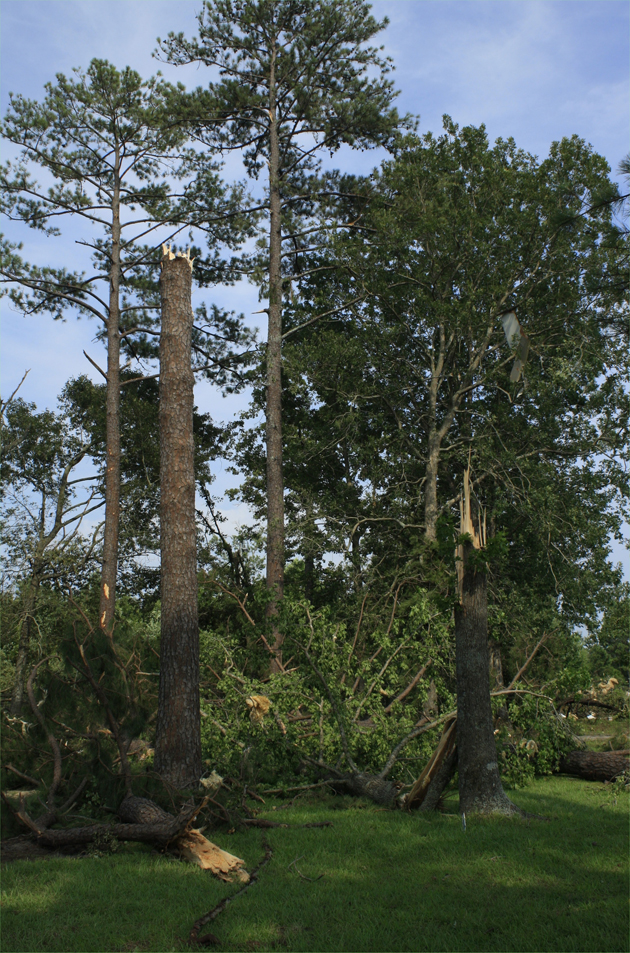 The small pine forest across from what little remained of the airport terminal was twisted and stripped and beaten into submission by the murderous storm. There certainly is a tremendous amount of airport debris in places there should not be: Above and below. photos by Stan Deatherage
The small pine forest across from what little remained of the airport terminal was twisted and stripped and beaten into submission by the murderous storm. There certainly is a tremendous amount of airport debris in places there should not be: Above and below. photos by Stan Deatherage
